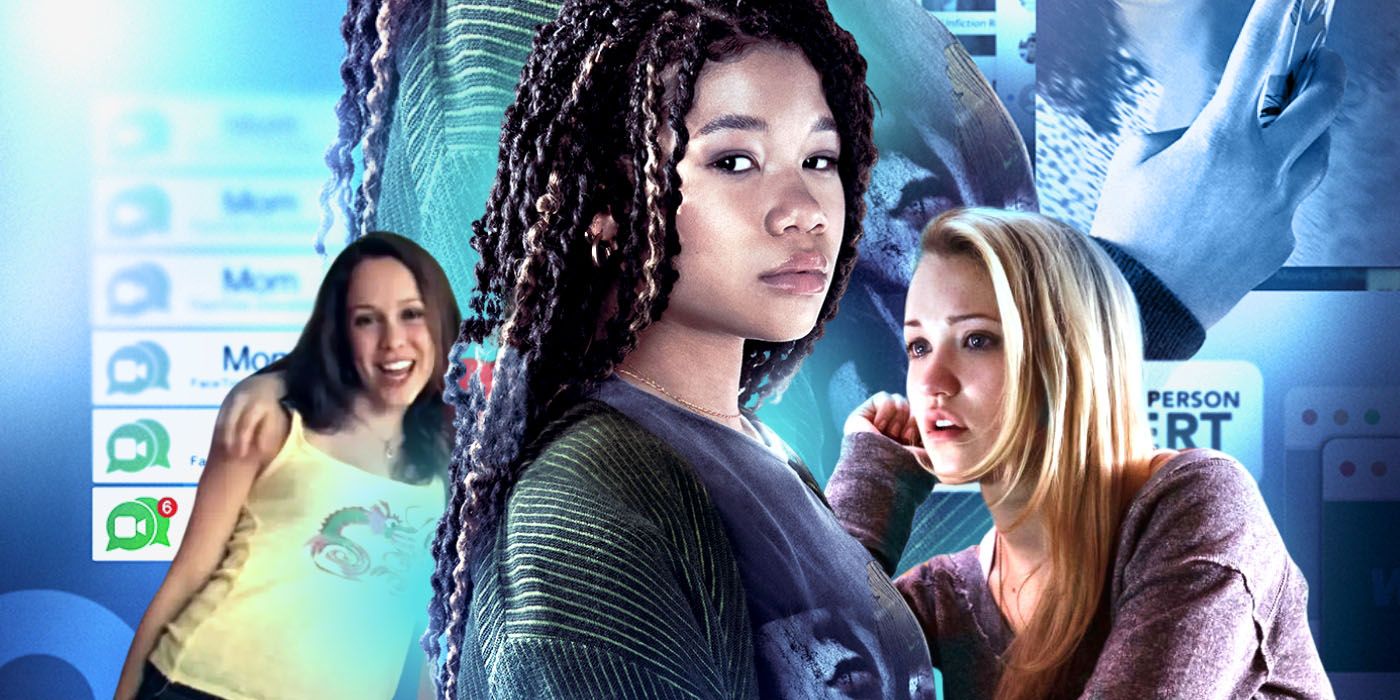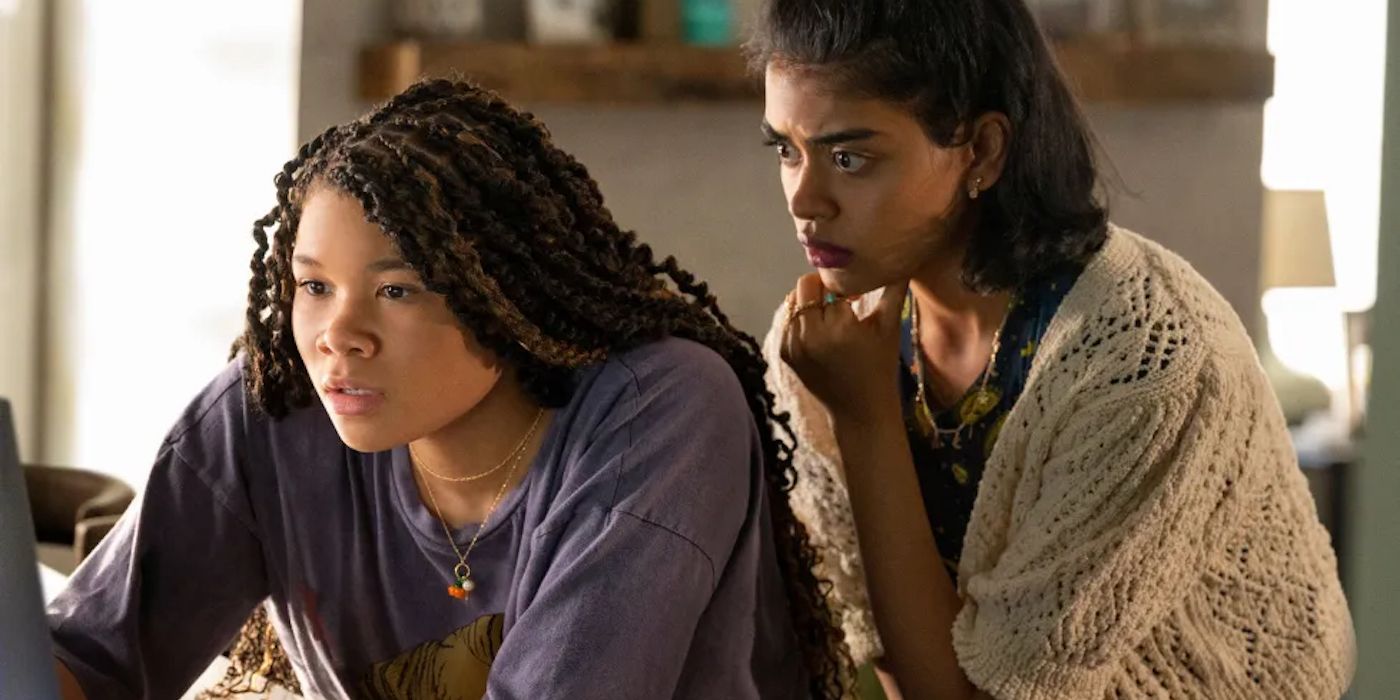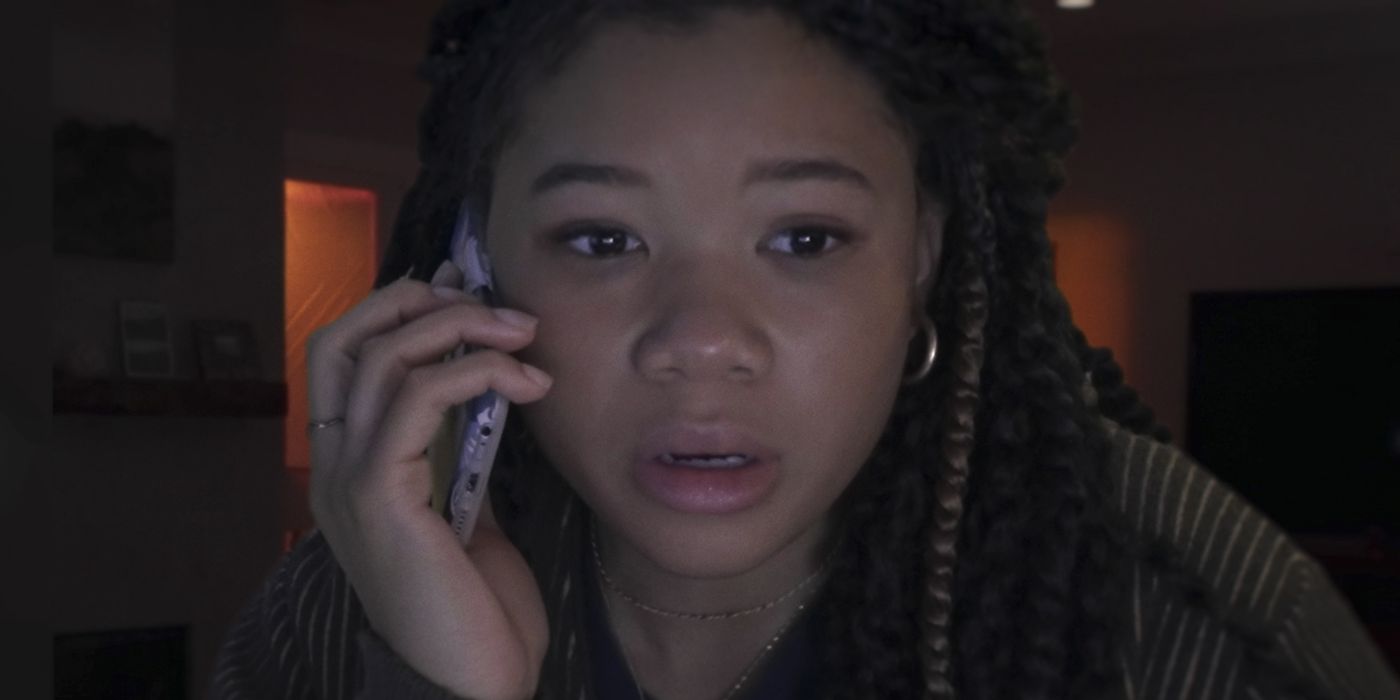If there’s one thing Missing’s release has done, it’s prove that there are filmmakers out there that actually understand the internet, technology, and how people use it. That’s a pretty spectacular feat. After all, look at what this film has been preceded by: a number of very special episodes, films like Cyberbu//y and Megan is Missing that offer terrible advice and often blatant misunderstanding of how technology works, and shows like The X-Files showing that every Italian poetry loving weirdo in a chatroom is probably some freak that will kill you and suck out your fat (yes, that really happened on that show. I promise.)
As long as the internet has been around, people have been making films and TV that depict the way it harms people, particularly the young and vulnerable. Though, it’s usually through images of a clear boogeyman, like a murderer, a predator, or a bully. There is a reason for this, and while Missing doesn’t play into it, those that came before it definitely do.
Internet Plots Are Rarely Made for the Younger Generation
You may not remember it, but way back in the 90s, Smart Guy had a very special episode about staying safe from pedophiles online. T.J. (Tahj Mowry) meets a guy selling bootleg video games in a chatroom that he thinks is another kid. Despite knowing better, he meets up with the guy and ends up seeing that the man is an adult. He goes back to the guy’s house, almost gets tricked into taking indecent pictures, and manages to get out and tell his father. All’s well that ends well, supposedly.
In a similar but more grown up vein, The X-Files had an internet based episode, too: Season 3’s “2Shy.” Except in this one, multiple women talk to a man in a chatroom for a while before deciding to meet up with him. Upon meeting, they’re killed by the man and the fat is sucked from their bodies. For so long, the killer gets away with it because he’s hiding behind a username.
These two examples have something in common. They aren’t really targeted at the young people they’re depicting; they’re meant to scare the parents of those young people. It’s evident in the way they treat internet users like they’re idiots. Everyone seems to conveniently forget any and all internet safety. There’s always some freak behind the screen, waiting to strike. Naturally, this serves to make the parents in the audience anxious. They can’t monitor everything, and the internet is so new that it’s hard to keep up with the truth and the trash of using it.
'Missing' Takes the Internet Storyline in a Different Direction
Missing, though, takes a different direction with this. It decides to focus on a young protagonist, eighteen-year-old June (Storm Reid), but not in the sense that she’s the victim of a horrible crime. In fact, the central conflict of the story has nothing to do with her use of the internet. Or, at least, not in the way we’re used to. If it were, Javier (Joaquim de Almeida) wouldn’t exist as the character he is in the film: the fatherly handyman trying to help June succeed. If this movie showed strangers online the way Smart Guy or The X-Files did, Javier would have turned out to be a terrible person intent on hurting June.
Not to mention, a large portion of internet based plots are about how adults are clueless about technology and how kids are attached to it, and yet in many of them, the young people do nothing but make the worst decisions possible. Take Cyberbu//y, for example. Though it was made in 2011, it seems to ignore the fact that block and report buttons exist, because its main character, Taylor (Emily Osment), never uses them. Not once. This isn’t to say that route always works, of course, and this isn’t to diminish the impact of cyberbullying. It is, however, still a laughably terrible depiction of online behavior.
A lot of internet-based plots love to say kids are perpetually online, but then depict them as idiots who don’t know anything about this thing they’re on all the time. Missing takes the other route, showing all of the smart ways June uses the internet to get information, such as using Google Translate when on the phone with the hotel in Cuba, and even the way she exploits her mother’s poor understanding of the internet by knowing the way she crafts every password. It’s a great reversal of the usual narrative that plays into the power of tech instead of horrors.
After all, Missing doesn’t want its audience to be scared of meeting people online, though, nor does it want to be some kind of moral panic inducing nightmare for the parents in the audience; instead, it focuses on an internet issue that people of June's age are encountering daily, whether they know it or not.
True Crime Obsession Is 'Missing's Antagonist
Missing opens with June watching a true-crime show and enjoying it, and ends with her watching the same true-crime show cover her mother and saying that she despises it. This makes sense; a major point of stress for June, outside of her mother’s disappearance, is the media coverage of it. We see the break neck speed at which people go from wanting justice for June’s mother to making videos and posts about how her mother probably orchestrated her own kidnapping. People with zero knowledge spread misinformation and harmful opinions all over the place, exploiting the story for clicks and views. Eventually, all of it drives June to anger, and she lashes out at her friends and Javier when they try to help.
It’s a thing we see all the time on the internet, isn’t it? People turn on those in the public eye at the drop of a hat. The consumption of true crime content is so voracious that you now see influencers eating and casually talking about the gruesome murder of a human being. The internet has made people really comfortable saying stuff that actively harms victims and families of disaster and crime, and this is something that most people see everyday on social media that desensitizes them to tragedy. This in turn leads to situations just like June’s; people harassing the family and victims both to their face and online without realizing it’s harassment.
It’s not that the things depicted in early examples don’t exist. Cyberbullying, grooming, murder, and assault are all real issues that people face that can have their roots in online activity. They’re serious, they deserve attention, and the aforementioned examples serve to raise awareness. However, the issue Missing handles is a far more common one that nearly everyone finds themselves facing at some point, and it’s because that’s just how society is right now. The internet, for all the good things it’s given us (many of which are shown in the film,) has also given us a way to say anything, to anyone, at any time, often without any repercussions. It’s why Missing works. It’s everyday horror, but done in a way that it’s actually relatable to the audience it’s trying to reach. And most importantly? It’s accurate.
'Megan Is Missing' Used the Internet Device Inaccurately
Missing is mostly done through the view of June’s computer. It’s a neat way of telling the story; we can see everything she’s doing in her research, we see it come together, and it - more interestingly - doesn’t come across as found footage. Instead, it’s real time, as if we’re in the room with her as she works. In a way, it’s similar to another internet-based horror film: Megan is Missing.
A 2011 film, Megan is Missing is the story of two young teens that go missing after talking to a man online that kidnaps, assaults, and ultimately kills them. The story is told exclusively through found footage from the girls’ computers, phones, and video cameras, as well as news reports and photos. Despite being a pretty awful movie, Megan is Missing resurfaced on TikTok a while back and sparked quite an interest, with people saying it was the most disturbing movie they’d ever seen.
The issue is, it was so horribly inaccurate in the way it used technology. Every conversation is poorly done. They way the characters are on video calls is awkward, unnatural, and honestly really cringe inducing, it’s never explained why we have footage of every call they ever made (mostly because we just wouldn’t have that, ) and it’s hard to believe all they did was FaceTime each other over and over. They never sent texts at all? Not buying it.
Internet Plots in Movies Misunderstand How Technology Works
This is one of those big issues with internet plots. They often fundamentally misunderstand how technology works and how kids use it. Megan is Missing doesn’t work as found footage, because no one is recording every single call they ever make, and that makes up most of the footage. It doesn’t work as an internet film, because it lacks any kind of accurate depiction of the internet. It falls back on appealing to the fear people have to the scary people behind the screen instead of making any kind of new observation, or even just providing a well told story, and amps up the fear factor with gruesome and uncomfortable imagery. Such is the way with most internet horror. If it ain’t broke, don’t fix it, right?
Except, it was broken. And Missing? Well, it fixed it.
'Missing' Makes Sense Because It Happens in Real Time
Most internet horror relies on found footage, or sticks to one form of technology to get its point across. Unfriended uses online chatrooms. #Horror uses social media. Chain Letter uses annoying chain emails. The list goes on and on. Instead of focusing on just one aspect of internet usage, Missing shows us everything. It shows us phone calls, video chats, emails, texts, and a multitude of websites. That’s the internet as actual people use it. By taking this approach, the film doesn’t come off as out of touch or cringey, like many others in the genre. In addition, it’s acted out in a believable way, unlike Megan is Missing; June’s conversations and activity feel real, we understand how and why we’re seeing them, and they aren’t so awkward it’s painful.
It can be hard to make a relevant internet plot. The culture of the internet and technology itself changes so quickly that by the time something comes out, it’s already inaccurate. However, a lot of ‘internet bad’ TV shows and movies never put the effort in to be good in the first place. They aren’t meant to entertain an audience; they’re meant to scare by building on misconceptions and urban legends. While this isn’t always a bad thing - we love myths and legends and monsters, and tons of films and TV shows are made strictly to raise awareness for certain issues - it can take a turn for the cheesy pretty quickly when you have people behind the wheel that aren’t entirely in tune with internet culture and technology.
In a day and age where the biggest threat to everyday people on the internet are phishing scams, the constant churning of radicalizing and desensitizing content, and companies (and sometimes even regular people that know how to do deep enough research) gathering your information and selling it off, we’ve grown past internet plots about demons that haunt chatrooms and how teens act stupid on social media. Missing has provided us with hope for the future of internet-based stories by focusing on how the internet helps us, the sometimes subtle way it harms us, and by not trading accuracy for cringey, clickbait horror that just end up on a list of laughably bad media that scared the hell out of your parents.






